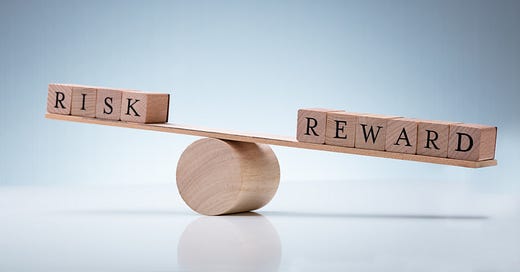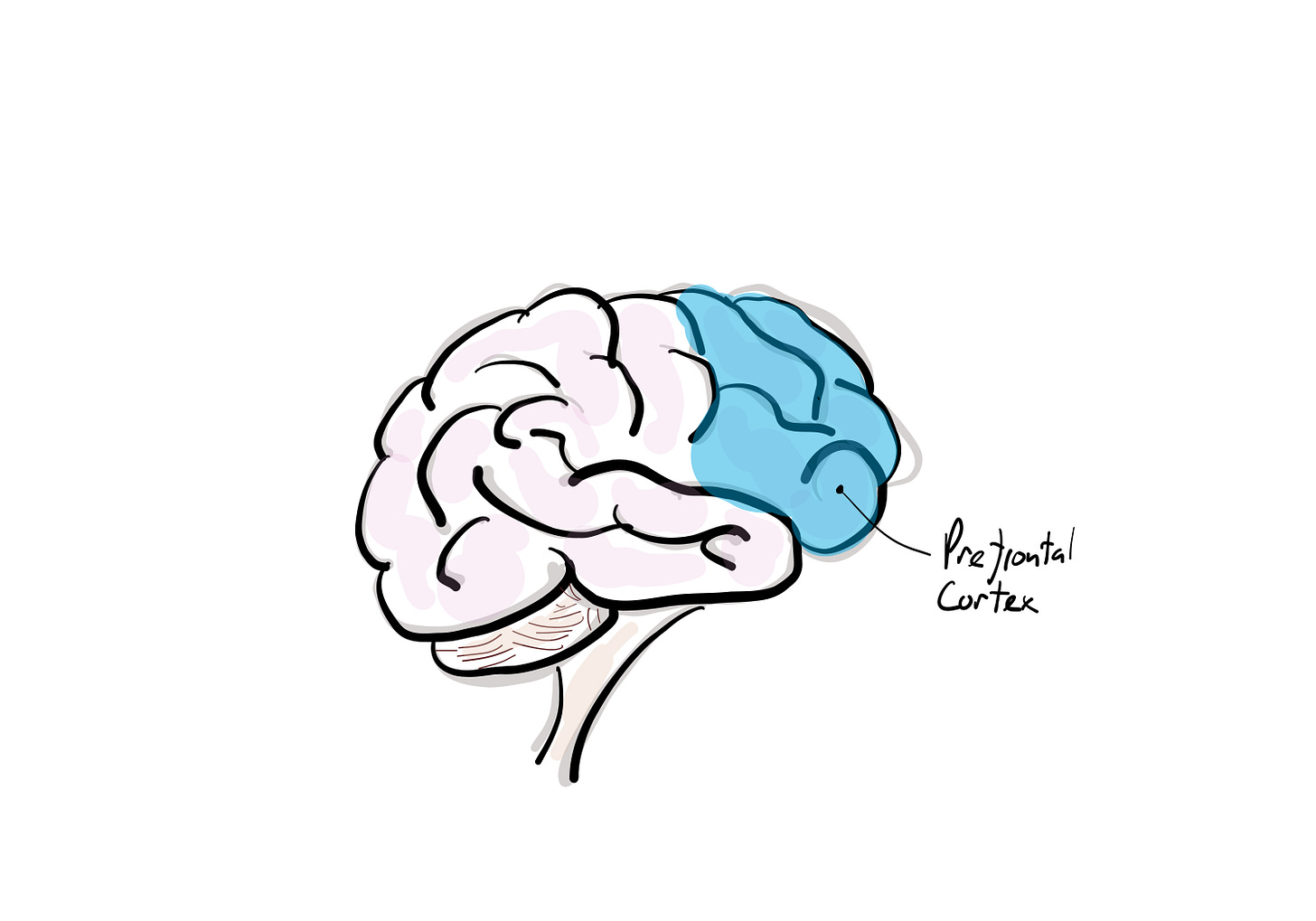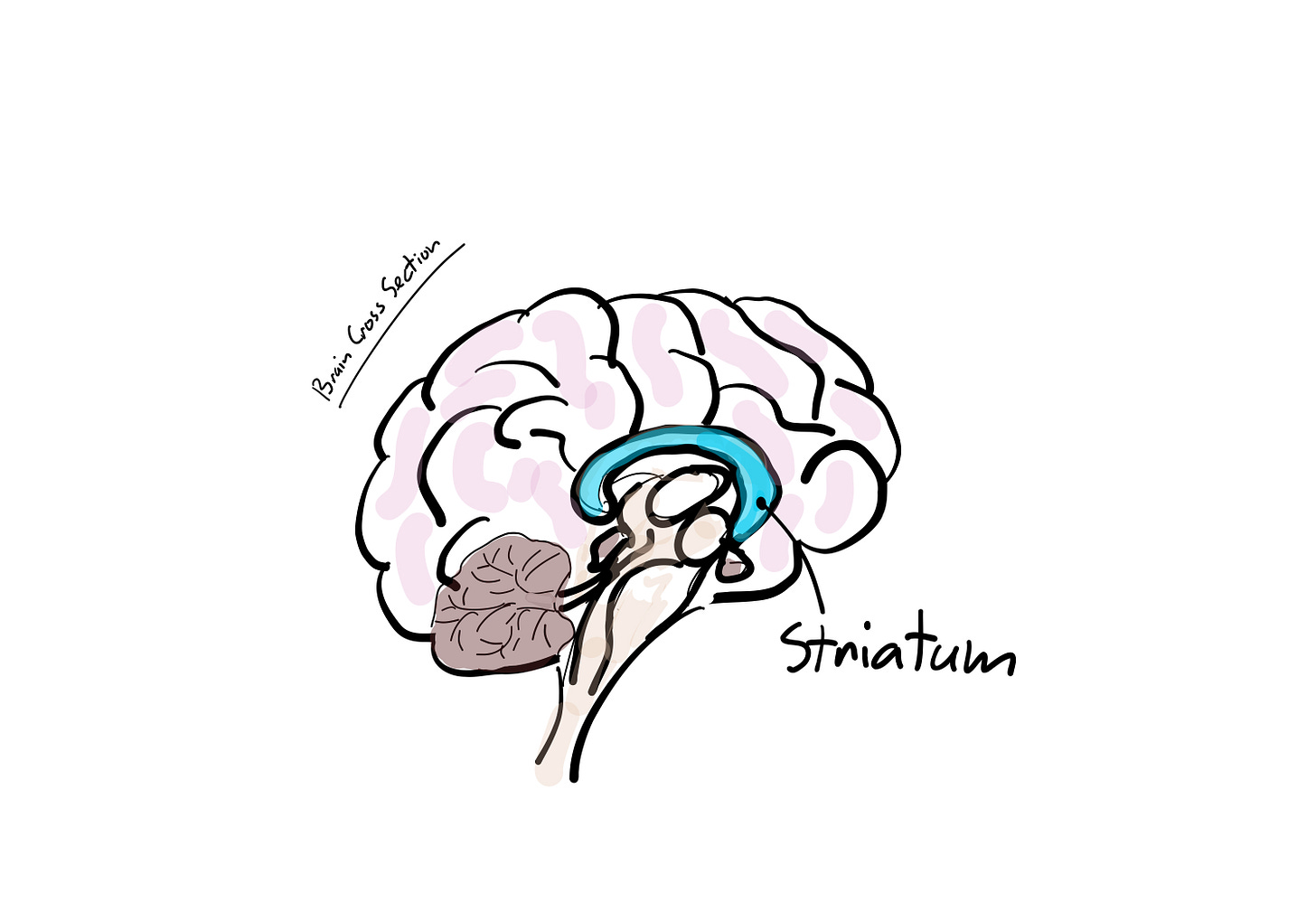Research Hit: New Insights Into How The Brain Balances Risk and Reward
New research shows that the balancing of risk and rewards is more nuanced than previously thought
You have written before on the brain and decision-making abilities - doesn’t the orbitofrontal cortex balance risk and reward?
Yes, this is a key area in the brain’s prefrontal cortex for decision making and for balancing alternatives particularly emotional ones. As you know I am currently writing my next chapter on the decisive brain and exploring this in much more detail.
So, this is timely research but what they found is that it is more nuanced than previously thought and discovering the precise mechanism is always exciting.
So, what is happening in the brain?
Well, previously we thought that the brain averaged out signals to give an average score of risk and reward that we decide on. But that may average different scenarios. Consider deciding on a restaurant: do you choose to got a restaurant that consistently produces good dishes or one that delivers some superb and some terrible dishes, or only sometimes. On average they could be ranked the same - but is the decision-making the same?
Is it?
Well, this research out of Harvard Medical School builds on the back of work developing algorithms also out of Harvard Medical School on predicting the action of dopamine which is important in motivation, reward, and learning. This model builds on distribution of positive and negative outcomes rather than an average and proved to be better at predicting behaviour.
In this current research, the scientists set up an experiment with mice while imaging individual neurons and indeed noticed that there are groups of neurons that seem dedicated to better than expected outcomes or worse than expected outcomes. In these mice they are located in a regions that is called the striatum.
So like an optimist and pessimist sitting in our brains!
Yes, precisely, and they could silence the pessimistic neurons to make an optimistic mouse and vice versa. Note though that this was in mice but this is more than likely to be the same in human beings.
Well, it feels like how my brain works
Yes, mine also, those sets of neurons bouncing between each other and working to create a distribution of risk and reward and also decisions.
Are some people likely to be more on one side? Does this even explain optimism and pessimism?
Well, we know that there are optimists and pessimists and this is likely related, but previous research has focused on brain regions not subgroups of neurons.
This research is specifically about making decisions based on risk and reward and fascinating it is. I have reported on plenty of other areas that show that many brain processes are not driven as much by regions but groups of distinct neurons.
And this interplay and pull between different neurons and brain regions is something I will talk about more in my upcoming chapter in The Handbook of The Brain in Business on The Decisive Brain.
Adam S. Lowet, Qiao Zheng, Melissa Meng, Sara Matias, Jan Drugowitsch, Naoshige Uchida.
An opponent striatal circuit for distributional reinforcement learning.
Nature, 2025;
DOI: 10.1038/s41586-024-08488-5






